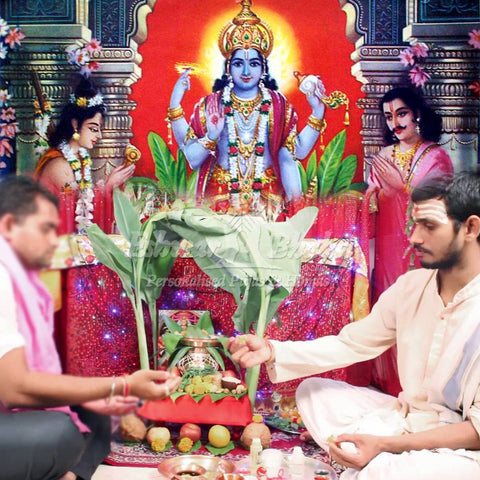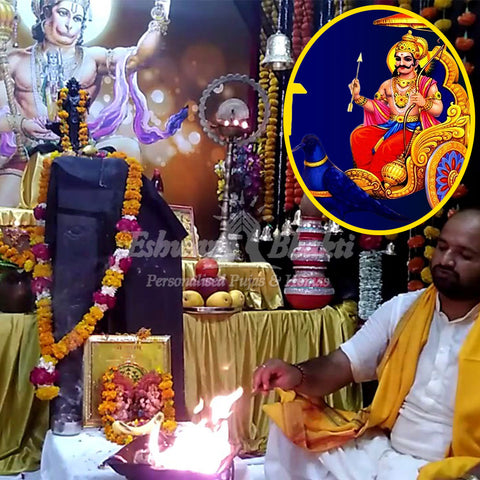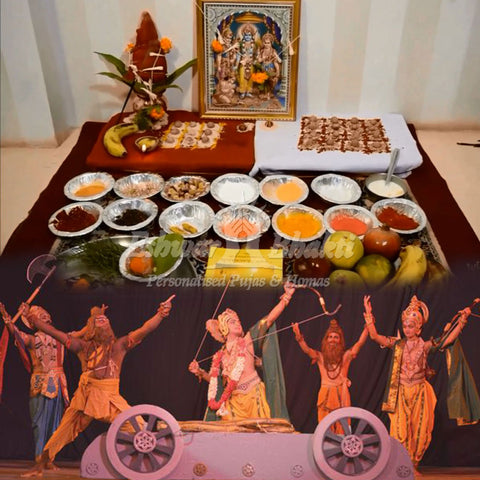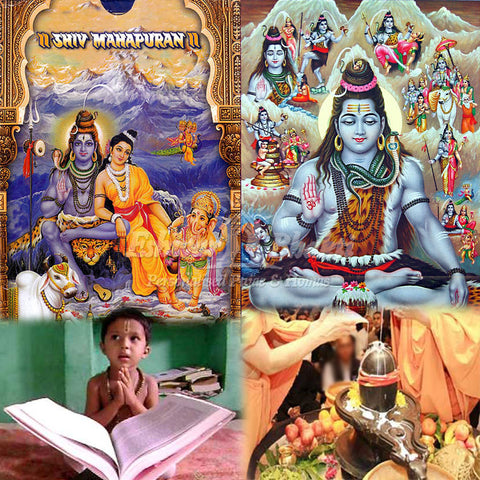What is Sankalpa?
 SANKALPA – a proposal in a Vedic way : Traditionally before performing any work we undertake sankalpa which is a kind of declaration to ourselves and to the God within us. The Vedas says that whole Universe is evolved through a Sankalpa of Lord Narayana. In practical terms a Sankalpa means a one-pointed resolve to focus both psychologically and philosophically on a specific goal. A sankalpa is a tool meant to refine the will, and to focus and harmonize mind and body.
SANKALPA – a proposal in a Vedic way : Traditionally before performing any work we undertake sankalpa which is a kind of declaration to ourselves and to the God within us. The Vedas says that whole Universe is evolved through a Sankalpa of Lord Narayana. In practical terms a Sankalpa means a one-pointed resolve to focus both psychologically and philosophically on a specific goal. A sankalpa is a tool meant to refine the will, and to focus and harmonize mind and body.
Sankalpa is a Sanskrit word meaning a resolution; a free will or a determination. The word Sankalpa itself means good intention, an oath or a resolution to do something, a solemn pledge to do something good. In Sanskrit ‘San’ means good and ‘Kalpa’ means a Saasthra or a Veda. Sankalpa means proposal to do something good in a Vedic or a Saasthric way. In any religious ceremony or ritual generally we observe a person taking a sankalpa (firm resolve) to achieve the purpose of the ceremony. Sankalpa literally means taking firm decision to accomplish one particular thing in spite of facing troubles in its achievement.
Posture of sitting: Sankalpa is performed by sitting in Padmasana by clasping the right palm over the left; rested on the right thighs near the knee. After chanting Sankalpa mantra usually some flowers and rice taken in the right hand palm are dropped in the Arghya pathra using water. Sometimes only water is used. A Vedic Sankalpa generally comprises of the elements of:
• Time
• Location
• Almanac (Panchanga)
• Lineage
• Wish or desire
• Target (the Deity)
• How is it being performed
• Nature or mode of karma
Example of a typical Sankalpa: Om Vishnuh Vishnuh Vishnuh, Sri Govinda Govinda! subhe sobana muhurtha…
Sri MahaaVishnor Aagnaaya, Pravarthamaanasya, Aadya Bramhane, Dwiteeya Paraardhe, Sri Swetha Varaaha Kalpe, Vaivaswatha Manvanthare, Ashtavimshatitamey Kaliyuge, Kali Prathama Charane, Bauddhaavathare, Saalivaahanasakhe…
Jambudweepe, Meror Dakshina bhage, Bhaaratavarshe, Bharatha Khande, Godavari Dakshina theere, Sobhana Gruhe, Devata Sannidhau…
Asmin Varthamaane, Vyavahaarike, Chaandramanena, Sri Jayanaama Samvatsare, Dakshinaayane, Ghreeshma Ruthau, Aashaada Maase, Krishna Pakshe, Panchami Thithau, Soumya Vaasare, Satabhisha Nakshatre, Soubhagya Yoge, Baalava Karane...
Evam guna visheshana visistayaam… subha thithau…
(your name), Kashyap Gothrothpanna, Krishna Bhagavan Namadheyasya…
Mama Gyaana Bhakthi Vairaagya praapthyartham…
SriJagat Rupi Mukhya Praananthargatha Sri Lakshmi Naarayaana Preethyartham, Bhagavat preranaaya; praapta Vidyaa anusaarena;
Yatha Sakthi… Sri Lakshmi Naaraayanasya Dhyaana-Aavaahanaadi Shodasa Upachaara Poojam Karishye…
The Explanation: starts with
Om Vishnu Vishnuh Vishnuh, Sri Govinda Govinda!: Invoking the blessings of Lord Narayan.
Time Element:
• Subhe sobana muhurthe; Sri MahaVishnor Aagnaaya; Pravarthamaanasya: Reckoning of time with reference to Lord Brahma. Some of the terms used in Sankalpa sloka that we recite contain the time element viz. Aaadhya Brahmana, Dwiteeya Parardhe, Swetha Varaha Kalpe, Vaivaswatha Manwanthare, Kaliyuge, Prathama Pade, Salivahana Sakhe. In these words there is reckoning of the current date as per Vedamana since the birth of Lord Brahma. As such, Hindu time element is embedded in Sankalpa (San+Kalpa)
• Aadya Bramhane Dwiteeya Parardhe: that means first half of the life time of the current Brahma is over and we are in the 2nd half called Dwiteeya Parardhe; in the 51st year of Lord Brahma (50 years of Lord Brahma is equal to 155.52 trillion human years)
• Swetha Varaaha Kalpe: that means we are currently in the first day (only day) called Swetha Varaaha Kalpa in the 51st year of Lord Brahma; the day (Kalpa) in which Lord Vishnu took the form (incarnation) of Varaaha (great Boar)
Vaivaswatha Manvanthare: that means in Swetha Varaha Kalpa (1st day of Lord Brahma) after passing through six Manvantharas out of 14; we are currently in 7th Manvanthara called Vaivaswatha Manvanthara. In terms of number of years after taking into account the sandhi Kalas, we have passed through 185.2416 crores human years (4320000 x 71 x 6) + (1728,000 x 7) during the previous six Manvantharas.
• Ashtavimshatitamey Kaliyuge - Kali Prathama Charane: that means in the current Manvanthara (Vaivasvatha) we have passed through 27 Maha Yugas out of 71; currently passing through the 28th Maha Yuga. Again in this 28th Maha Yuga after passing through Krutha, Thretha and Dwaapara Yugas; we are currently in Kali Yuga in its first quarter after passing through 5115 years (as on 31.03.2014). As per scripts it is said that Kali Yuga had commenced in the year 3102 BC. Counting from the beginning of Kalpa it is (185.24 + 11.67 + 0.39 + 0.005) =197.30 crores human years since commencement of creation by Lord Brahma.
• Bauddhavathare: that means in the time when Lord SriManNaaraayana has taken birth as Buddha.
• Saalivahana Sakhe: further reckoning down based on the concept of Sakha, after passing through the Yudhishtira and Vikrama Sakhas we are currently in Saalivaahana Sakha; 1936 years since its beginning in 78 AD.
Geographical or Location Element:
• Jambudweepe: Out of seven Dweepas in this Universe, we are in Jambudweepa (island) on the Earth (Bhumandala) surrounded by the Sea (Lavana Samudra)
• Meror Dakshina Bhaage (paarsve): To the south of Meru Parvatha a mountain which is in the center of Jambu Dweepa.
• Bhaaratavarshe: There are nine Varshas in this Universe, out of which we are inBhaarathavarsha which is in the southern region of Meru Parvatha.
• Bharathakhande: In the land ruled by King Bharatha Aasethu Himaachala Paryantham (present India);
• Godaavari Dakshina Theere: To the south of the holy river Godavari (depending on location this may change)
• Mama Swagruhe (own house) or Sobhana Gruhe (rented house): This may change depending on the place where one is performing the karma.
• Devata Sannidhau: In the presence of the God dwelling in my house; depending on the place where one is performing the karma this may differ.
Almanac - Panchanga (description of the current day) :
• Asmin Vartamaanena: At the present time.
• Vyavahaarike – Chaandramaanena: As per present calendar that is in vogue.
• Samvatsare: There are sixty years as per Lunar Calendar which gets repeated cyclically starting from Prabhava and ending with Akshaya.
• Aayane: The year is divided into two based on the transit of Sun into Makara raasi called Uttarayana and Karkataka raasi called Dakshinayana.
• Ruthau: The year is again divided into six seasons starting from Vasantha followed by Greeshma, Varsha, Sharad, Hemantha and Sisira.
• Maase: Each season or ruthu comprises of two months each named after the star present on the full Moon day of the month as per Lunar Calendar starting from Chaitra and ending with Phalguna. According to solar calendar it is referred as per the transit of Sun into each Zodiac (Raasi) starting fromMesha (Aries) and ending with Meena (Pisces).
• Pakshe: Each month (Maasa) is again divided into two fortnights; based on the Moon’s position (waxing Moon or waning Moon) called Sukla Paksha (starting from Prathama to Pournami) and Krishna or Bahula Paksha (starting from Prathama to Amavasya)
• Thithau: Each paksha comprises of 15 thithis out of which; 14 gets repeated in both pakshas and the 15th one will be either Pournami or Amaavaasya.
Vaasare: There are seven days in a week starting from Sunday which gets repeated cyclically.
• Nakshatre (Constellation): There are twenty seven (27) stars in the almanac which are placed in 12 sings (raasis) of the zodiac. These stars cyclically get repeated starting from Aswini and ending with Revathi.
• Yoge: There are 27 yogas in the almanac starting from Vishkumbha and ending with Vaidruthi. These Yogas also get repeated cyclically.
• Karane: There are eleven (11) Karanas out of which seven gets repeated and four occurs on specific days viz. Sukla Prathama, (Kimsthugna), Bahula Chaturdasi (Sakuni), and Amaavaasya (Chatushpaath, Naagava). In practice the names of Yoga and Karana are not spelled out. Instead it is just mentioned as Subha Yoge, Subha Karane. On some occasions it is mentioned as Vishnu Yoge and Vishnu Karane.
• Evam guna visheshana vishitayaam – Subha thitau
Element of Lineage (Gothra):
• Kashyap Gothrothpanna: Description of Rishi lineage in which one is born which is generally known from forefathers. Here one’s Gothra Pravara to be spelled out. For those who don't know their Gotra, Kashyap is used.
• Namadheyasya: name by which one is called by (your name)
Wish or desire element:
• Mama Gyaana Bhakthi Vairaagya praapthyartha: Purpose may differ according to the desire; need; cause. It could be for one’s self materialistic benefits or for family reasons or for self Gyana Bhakti Vairaagya prapthyartham or for performing sacred rites or for the sake of society etc.
Target element (the Deity):
• Sri Lakshmi Naaraayanasya Preethyartham: Addressing whom, which deity, the specific ritual is being performed.
How it is being performed:
Self or with the help of a learned Purohit; if it is self, Bhagavat preranaya prapta vidya anusaarena yatha Shakthi; if it is through a Purohit, Aachaarya Mukhya.
Nature or mode of ritual (Karma):
The ritual could be Nitya (daily) or Naimittika Karma or any specific ritual; pooja; vratha; Homa; Remedy; Seva; Pitru Kaarya; Yagya, Dana etc. In the above example it is: Sri Lakshmi Naaraayanasya Dhyaana-Aavaahanaadi Shodasa Upachaara Poojam Karishye.




